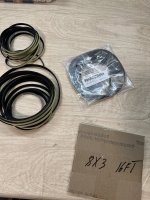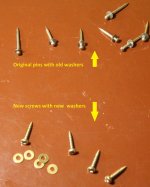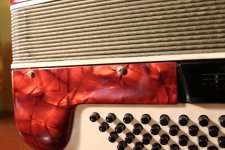isorry123
Member
How dumb would it be to replace bellows pins with #2 or #4 wood screws?
I’m missing a few, and many are loose. I ordered a bellows pin “variety pack” from Ernest Deffner but who knows when that’ll arrive. And then the pins would just be mismatched.
If I were to just replace all pins with wood screws, I think it’d be more uniform and give a tighter seal.
Thoughts ? Or has anyone cut their own bellows pin from round head nails? Linoleum nails? Estucheon nails?
I’m missing a few, and many are loose. I ordered a bellows pin “variety pack” from Ernest Deffner but who knows when that’ll arrive. And then the pins would just be mismatched.
If I were to just replace all pins with wood screws, I think it’d be more uniform and give a tighter seal.
Thoughts ? Or has anyone cut their own bellows pin from round head nails? Linoleum nails? Estucheon nails?



